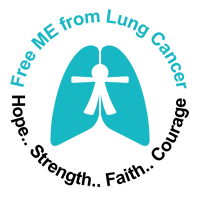 Although active tobacco smoking, including cigarettes, cigars, and pipes, is the leading cause of lung cancer it is not the only cause. In the United States, environmental exposures to radon are the second leading cause of lung cancer. Radon exposure is the leading cause of lung cancer in people who have never smoked tobacco. Additional risk factors include exposure to second-hand smoke, ionizing radiation, asbestos, household air pollution attributed to wood and coal burning, ambient air pollution, certain heavy metals (chromium, cadmium, arsenic) and some organic chemicals. Risks are also increased among people with a medical history of tuberculosis or a family history of lung cancer. Ongoing research has identified genetic variation that may contribute to a person’s risk of developing lung cancer, especially in those who develop the disease at a younger age.[2] To prevent new cancers from starting, scientists look at risk factors and protective factors. Anything that increases your chance of developing cancer is called a cancer risk factor; anything that decreases your chance of developing cancer is called a cancer protective factor.[2]
Although active tobacco smoking, including cigarettes, cigars, and pipes, is the leading cause of lung cancer it is not the only cause. In the United States, environmental exposures to radon are the second leading cause of lung cancer. Radon exposure is the leading cause of lung cancer in people who have never smoked tobacco. Additional risk factors include exposure to second-hand smoke, ionizing radiation, asbestos, household air pollution attributed to wood and coal burning, ambient air pollution, certain heavy metals (chromium, cadmium, arsenic) and some organic chemicals. Risks are also increased among people with a medical history of tuberculosis or a family history of lung cancer. Ongoing research has identified genetic variation that may contribute to a person’s risk of developing lung cancer, especially in those who develop the disease at a younger age.[2] To prevent new cancers from starting, scientists look at risk factors and protective factors. Anything that increases your chance of developing cancer is called a cancer risk factor; anything that decreases your chance of developing cancer is called a cancer protective factor.[2]
